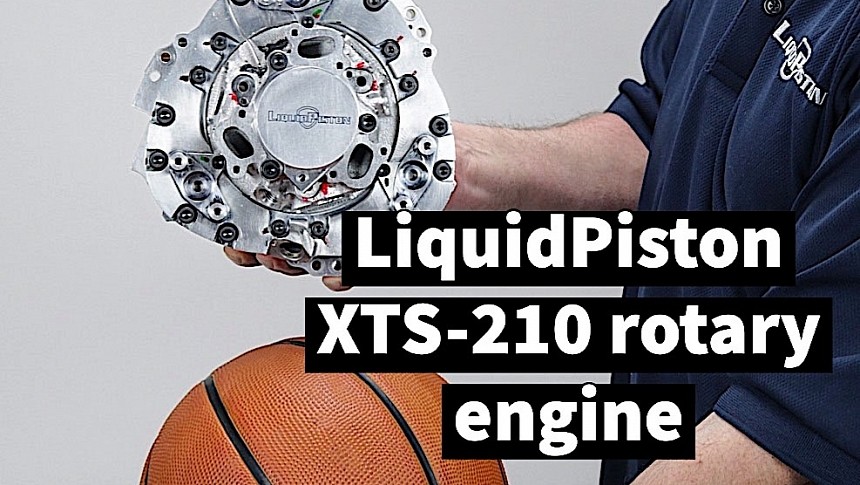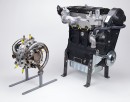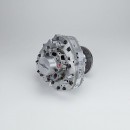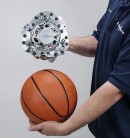Looking at all the incredible machines roaming our roads these days you’d be inclined to believe it can’t get better than this when it comes to the combustion engines they use. But if you ask a crew named LiquidPiston, there’s more than enough room for improvement. And improve it did, as one of its solutions clearly demonstrates.
LiquidPiston first came in the news two decades ago, when its founder cooked up the initial design for something they called the High Efficiency Hybrid Cycle (HEHC) engine, a piece of tech that combines the working principles of several other engine designs.
The crew didn’t get to test what they describe as “the world’s first naturally-aspirated rotary diesel engine” until 2010 and started growing like all other startups with great ideas do soon after that. At the moment, the company is in the business of developing multi-fuel combustion engines that can be scaled to produce from one to 1,000 hp, meaning we should hear a lot more about them in the near future.
One of the company’s designs, the XTS-210, has even caught the attention of the U.S. Army. In November last year, the military branch awarded LiquidPiston a $9 million contract to create a variant of this technology to be used in military applications.
The Army is looking for a tech that would use up to 30 percent less fuel than regular gasoline engines in the same power class, while being 10 times lighter and smaller than diesel engines that have the same output. It’s likely the Army will deploy the XTS-210 variant, once it’s ready, in drones, sea and air vehicles. A possible use as an auxiliary power unit is also considered.
This week LiquidPiston said it decided to make the XTS-210 available for other interested parties, the ones in need of such an engine. And with this development, the applications can be literally endless.
The XTS-210 is essentially a rotary engine the size of a basketball and has just two moving parts, the rotor and the shaft. The thing works as a two-stroke engine, delivering six combustion events per revolution of the rotor.
Thanks to supercharging, the 210cc engine can deliver an output of 25 horsepower. That may not seem like much, but compared to diesel piston engine of the same power output, this one comes in a package that is about 80 percent smaller and lighter. People can use the engine for anything from power generation to propulsion for vertical take-off and landing aircraft (VTOL).
We are not given any details on exactly when the XTS-210 will become available for everyone interested in getting it, nor are we told anything about pricing. The U.S. Army, however, will receive its variant of the engine next year.
The crew didn’t get to test what they describe as “the world’s first naturally-aspirated rotary diesel engine” until 2010 and started growing like all other startups with great ideas do soon after that. At the moment, the company is in the business of developing multi-fuel combustion engines that can be scaled to produce from one to 1,000 hp, meaning we should hear a lot more about them in the near future.
One of the company’s designs, the XTS-210, has even caught the attention of the U.S. Army. In November last year, the military branch awarded LiquidPiston a $9 million contract to create a variant of this technology to be used in military applications.
The Army is looking for a tech that would use up to 30 percent less fuel than regular gasoline engines in the same power class, while being 10 times lighter and smaller than diesel engines that have the same output. It’s likely the Army will deploy the XTS-210 variant, once it’s ready, in drones, sea and air vehicles. A possible use as an auxiliary power unit is also considered.
The XTS-210 is essentially a rotary engine the size of a basketball and has just two moving parts, the rotor and the shaft. The thing works as a two-stroke engine, delivering six combustion events per revolution of the rotor.
Thanks to supercharging, the 210cc engine can deliver an output of 25 horsepower. That may not seem like much, but compared to diesel piston engine of the same power output, this one comes in a package that is about 80 percent smaller and lighter. People can use the engine for anything from power generation to propulsion for vertical take-off and landing aircraft (VTOL).
We are not given any details on exactly when the XTS-210 will become available for everyone interested in getting it, nor are we told anything about pricing. The U.S. Army, however, will receive its variant of the engine next year.







